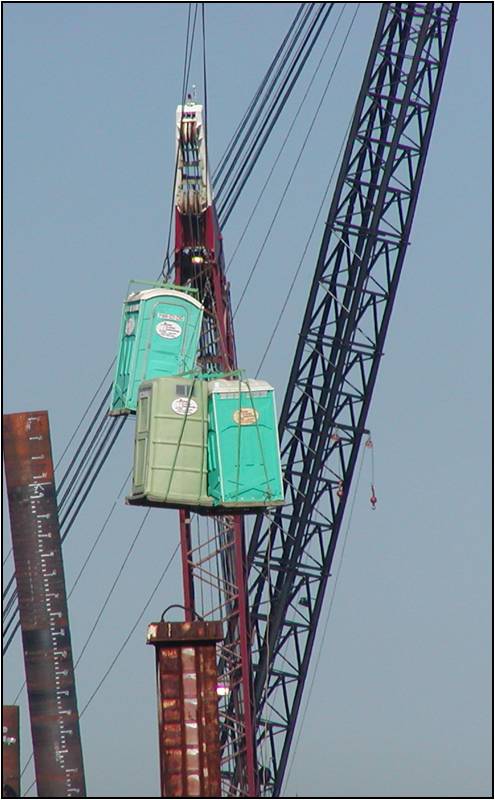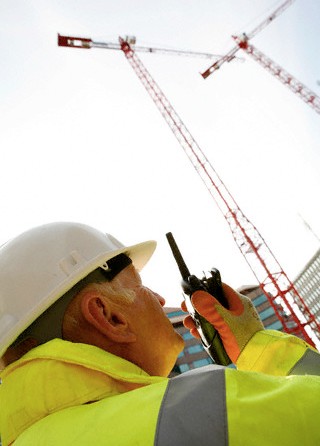Safety Quiz On Corporate Crane Procedures Manual!

A crane is a massive type of construction machine which is equipped with rope and wires that are used to lift or move heavy loads horizontally. But there are certain risks and hazards while handling a crane during construction work or lifting operations. This quiz has been designed to test your knowledge about the Corporate Crane Procedures Manual which includes risks and safety measures. So, let's try out the quiz. All the best!
- 1.
When can a crane be operated outside of its capacity?
- A.
Only if the rigging can handle it.
- B.
Never!
- C.
If the operator has experience and knowledge the crane can handle the load.
- D.
If your foreman approves it.
Correct Answer
B. Never!Explanation
According to company policy, "At all times, the machine must be operated in accordance with the capacity charts, rigging drawings, and wire rope chart applicable to the particular machine."Rate this question:
-
- 2.
What is considered a “Critical Lift”?
- A.
Any lift of 100,000 pounds or more.
- B.
A lift that requires multiple cranes.
- C.
A lift that exceeds 85% of the crane’s capacity.
- D.
A lift that exceeds 50% of the crane’s capacity.
- E.
A, B, and C
Correct Answer
E. A, B, and CExplanation
Other critical lifts include: 100,000+ lbs. lifts and lifts that are near powerlines.Rate this question:
-
- 3.
When are we required to use an "On the Spot Lift Plan" (pick the best answer)?
- A.
On critical picks.
- B.
Every pick needs to be tied to a "On the Spot Lift Plan".
- C.
Special picks.
- D.
Unplanned picks.
Correct Answer
B. Every pick needs to be tied to a "On the Spot Lift Plan".Explanation
In order to ensure safety and proper execution of lifting operations, it is necessary to have a "On the Spot Lift Plan" for every pick. This plan helps in assessing the risks involved, determining the appropriate equipment and techniques to be used, and ensuring that all necessary precautions are taken. By tying every pick to a lift plan, it ensures that the lifting operations are well-planned and executed in a safe manner.Rate this question:
-
- 4.
Corporate Policy does not allow cranes to operate within _______ feet of power lines.
- A.
10
- B.
25
- C.
50
- D.
100
Correct Answer
A. 10Explanation
Any cranes that will be operating close to powerlines need to have a proper plan setup and safety guidelines in place. We have to know the voltage and the height of the powerline. If the powerline is above 50kv we need to add to our safe distance.Rate this question:
-
- 5.
S.W.L.L. is an acronym that means:
- A.
Slower While Light Lifting
- B.
Safe Working Load Limit
- C.
Small Weight Lifting Limit
- D.
Secure Whole Lattice Length
Correct Answer
B. Safe Working Load LimitExplanation
S.W.L.L. is an acronym that stands for Safe Working Load Limit. This term is commonly used in industries such as construction and manufacturing to refer to the maximum weight that a piece of equipment or structure can safely handle. It is important to adhere to the safe working load limit to prevent accidents, damage, or failure of the equipment or structure.Rate this question:
-
- 6.
Synthetic Nylon slings are allowed for what type of lifts?
- A.
None
- B.
Lighter lifts.
- C.
Pipes and Scaffolding
- D.
As a last resort with your Job Superintendents approval.
Correct Answer
D. As a last resort with your Job Superintendents approval.Explanation
Even brand new nylon slings can tear. They are not allowed to be used unless approved by your Job Superintendent.Rate this question:
-
- 7.
Who is responsible for ensuring the safe operation of cranes?
- A.
Job Superintendent
- B.
Sponsor
- C.
Project Manager
- D.
Safety Sponsor
Correct Answer
A. Job SuperintendentExplanation
The Job Superintendent is responsible for ensuring the safe operation of cranes. As the superintendent, they oversee the entire project and have the authority to make decisions regarding safety protocols and procedures. They are responsible for ensuring that all crane operators are properly trained and certified, that the cranes are inspected and maintained regularly, and that safe operating practices are followed at all times. The Job Superintendent plays a crucial role in ensuring the safety of both the workers and the equipment on the construction site.Rate this question:
-
- 8.
How many people are allowed to communicate with the crane at one time?
- A.
1
- B.
2
- C.
3
- D.
4
Correct Answer
A. 1Explanation
When more than one person communicates with the crane it can cause confusion and possible incidents.Rate this question:
-
- 9.
How often are cranes required to pass a general inspection?
- A.
Before the first use only.
- B.
Quarterly
- C.
Monthly
- D.
Before each shift.
Correct Answer
D. Before each shift.Explanation
Designated Operators will inspect their crane before each shift of operation. Any deficiency or defective part which may impair the safe operation of the crane must be repaired before the crane is placed in service. Daily crane inspections will be recorded on a daily inspection form for the specific crane inspected and be submitted to the Project Manager or his designee.Rate this question:
-
- 10.
Which of the following conditions would require a hoisting wire rope to be removed from service?
- A.
6 random broken wires in one lay.
- B.
Kinking
- C.
Heat Damage
- D.
Bird Caging
- E.
All of the above.
Correct Answer
E. All of the above.Explanation
Any hoisting wire rope that shows any damage should be reported to the Job Superintendent.Rate this question:
-
- 11.
What is the maximum life for a cable pendant in lift crane service?
- A.
2 Years
- B.
1 Year
- C.
10 Years
- D.
5 Years
Correct Answer
C. 10 YearsExplanation
The maximum life for a cable pendant in lift crane service is 10 years. This means that the cable pendant, which is used to control the movement of the crane, can be expected to function properly and safely for up to a maximum of 10 years before it needs to be replaced. This timeframe is likely determined based on factors such as the durability and wear resistance of the materials used in the cable pendant, as well as industry standards and regulations for crane safety.Rate this question:
-
- 12.
Designated Operators must (check all that apply):
- A.
Be qualified to operate the equipment.
- B.
Be trained in the use of the “On The Spot Lift Plan” (Company Form 584LP).
- C.
Have a basic knowledge of crane inspection to be aware of any problems in the crane structure, hoisting assembly, or drive train.
- D.
Understand the Crane Capacity Charts.
- E.
Be thoroughly familiar with the controls/power system.
- F.
Fresher can work as interns
Correct Answer(s)
A. Be qualified to operate the equipment.
B. Be trained in the use of the “On The Spot Lift Plan” (Company Form 584LP).
C. Have a basic knowledge of crane inspection to be aware of any problems in the crane structure, hoisting assembly, or drive train.
D. Understand the Crane Capacity Charts.
E. Be thoroughly familiar with the controls/power system.Explanation
Designated Operators must be qualified to operate the equipment, as they need to have the necessary skills and expertise to safely operate the machinery. They also need to be trained in the use of the "On The Spot Lift Plan" to ensure that proper planning and safety measures are in place. Additionally, they should have a basic knowledge of crane inspection to identify any potential issues with the crane structure, hoisting assembly, or drive train. Understanding the Crane Capacity Charts is important to ensure that the equipment is being used within its safe operating limits. Lastly, being thoroughly familiar with the controls and power system is crucial for efficient and safe operation of the equipment.Rate this question:
-
- 13.
When deciding which boom to use on a project you should always choose:
- A.
The longest boom possible.
- B.
The heaviest boom.
- C.
The shortest boom possible.
- D.
None of the above.
Correct Answer
C. The shortest boom possible.Explanation
Always choose the shortest boom possible to get the job done.Rate this question:
-
Quiz Review Timeline +
Our quizzes are rigorously reviewed, monitored and continuously updated by our expert board to maintain accuracy, relevance, and timeliness.
-
Current Version
-
Mar 20, 2023Quiz Edited by
ProProfs Editorial Team -
Mar 19, 2009Quiz Created by
Kiewitsafe
 Back to top
Back to top










